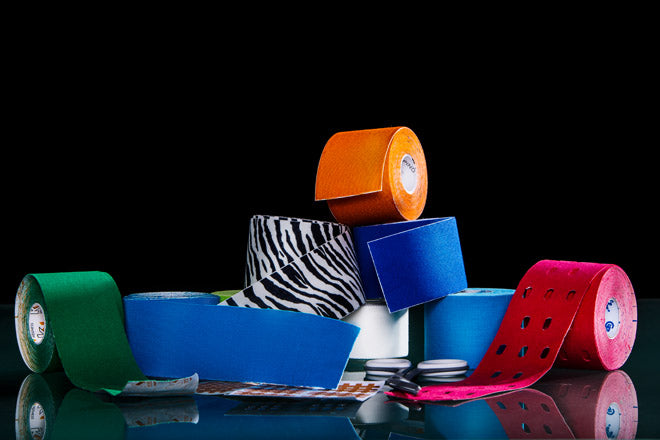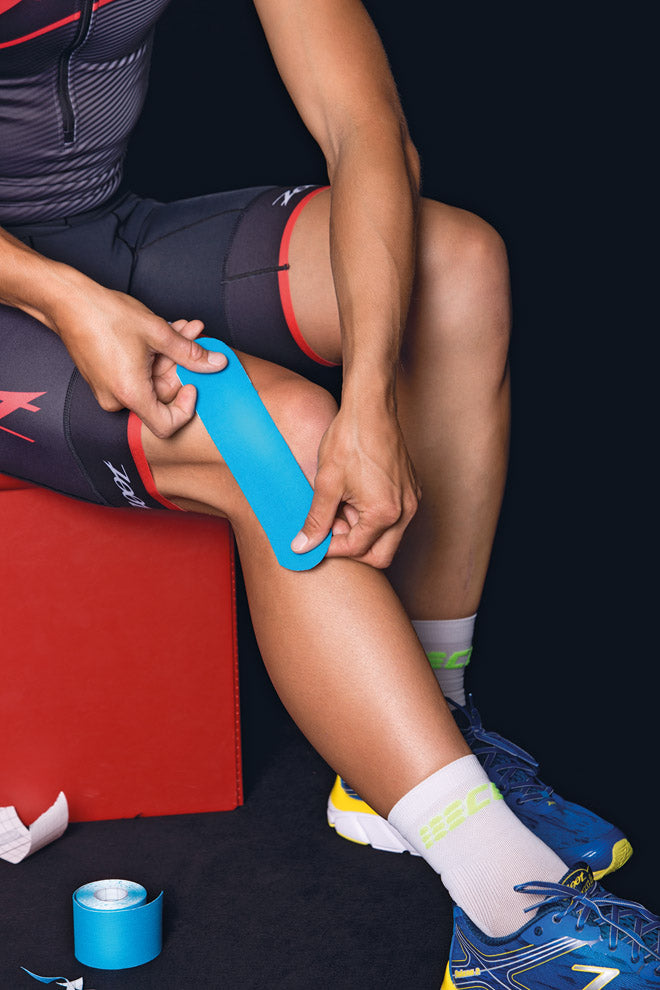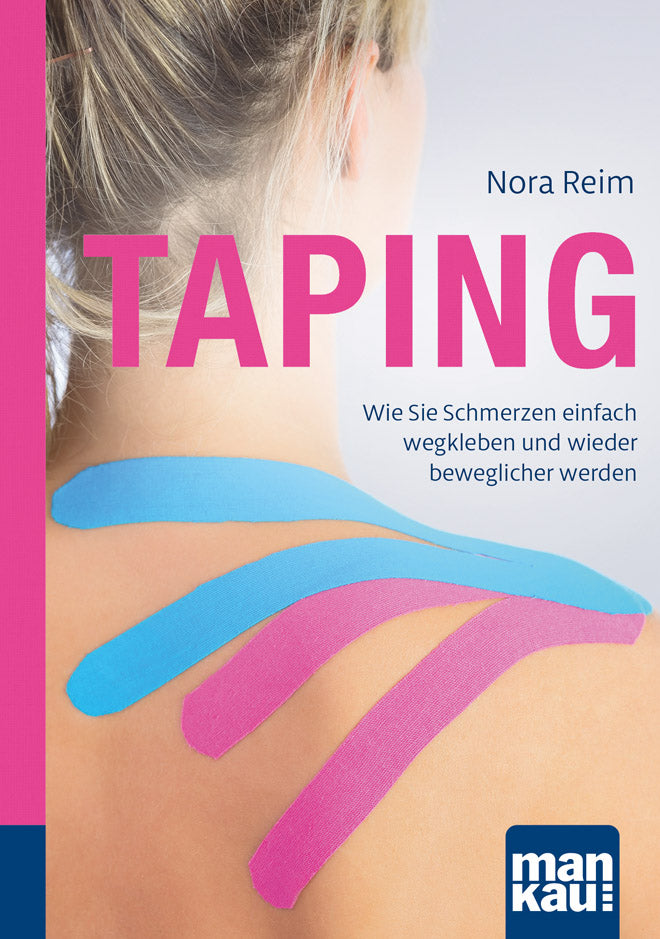
"With taping you can simply "tape away" pain and tension!"
"With taping you can simply "tape away" pain and tension!"
Interview with sports journalist and fitness expert Nora Reim about “Taping ”
"With taping, you can relieve tension, reduce swelling, prevent injuries and generally improve your mobility. With the right instructions and a little tact, you can easily learn how to apply the inexpensive tapes yourself and are therefore ideal as a therapy method for home use."
Sports journalist and fitness expert Nora Reim, author of the compact guide “Taping”, explains how you can simply “tape away” pain with colourful cotton adhesive tapes and thereby increase your physical well-being.
More and more physiotherapists as well as competitive and recreational athletes swear by the elastic adhesive tapes on their bodies. Hand on heart: is this just a lifestyle trend or a real therapy?
Nora Reim: The colorful cotton bands do indeed appear to be tattoos on the body. But the colored stripes on the skin have a lot to offer: When applied correctly, tapes can relieve tension in the shoulder and neck area, reduce swelling after bruising and prevent typical sports injuries! The positive effect of the plasters even goes so far that certain taping bandages - for example on the calves of runners - are banned in athletics as they are considered to improve performance.
Where does so-called taping come from, and since when has it been possible to treat sports injuries with the colorful plasters?
Nora Reim: All modern forms of taping can be traced back to the Japanese doctor and chiropractor Dr. Kenzo Kase. He developed what was originally "rigid" taping with rigid bandages into what is known as Kinesio taping with elastic bands for the treatment of competitive athletes. One of his first patients was the Dutch professional football player Alfred Nijhuis from MSV Duisburg, who played in the Japanese league in the 1990s. After a "horse kiss", Nijhuis had to be taken out of the game and given medical treatment. Instead of massages and injections, Kase put a tape on his thigh, which did not fail to have an effect: after three days, Nijhuis was back on the pitch and introduced the method of so-called Kinesio taping developed by Kase to Europe in 1998.
What taping methods are there and what effects can they have?
Nora Reim: A distinction is made between the previously mentioned rigid taping with rigid bandages and the Kinesio adhesive technique with elastic strips, which was developed by Dr. Kenzo Kase. Both methods have their justification and are dependent on the purpose of their use: While rigid taping is about fixing and stabilizing joints, Kinesio tapes can be worn both preventively and for acute complaints. In contrast to non-elastic materials such as Leukoplast, the elastic strips follow the wearer's every movement, making them versatile and extremely easy to care for due to their high cotton content.
Despite numerous positive feedback from physiotherapists, patients and athletes, the health benefits of taping are controversial. Why is this, and is there a possible change in awareness?
Nora Reim: "If the farmer doesn't know it, he won't eat it," as the saying goes. In fact, the majority of the population still believes that applying adhesive tape is a science in itself and is reserved for medical personnel such as doctors and physiotherapists. But taping is not even part of the relevant specialist training! Rather, it is a weekend course that costs a lot of money and whose participation anyone can ultimately "buy". Although taping does not replace therapy by a professional physiotherapist, it is an excellent supplementary measure for home use. In addition, the cotton plasters are free of chemical side effects, so there is hardly anything that can go wrong when sticking them.
Speaking of effectiveness – with your compact guide you motivate readers to learn the taping technique and use it for physical complaints. Are there any risks and contraindications to taping?
Nora Reim: You can hardly do anything wrong when you stick it on yourself - the worst that can happen is that the tape doesn't work! However, you should avoid using tape that is too tight, as this will constrict the skin and cause blood to pool in the body. If you experience allergic reactions such as itching or redness, the tape should also be removed as soon as possible. Otherwise, the cleaner, smoother and hair-free the surface, the better the tape will stick to the body!
Blue, pink and black are popular colors for tapes. Do they just have a fashion meaning or is there a special effect behind them?
Nora Reim: Opinions differ when it comes to choosing colors: some competitive athletes, such as triathlon pro Anja Knapp, swear by the beneficial effects of blue and pink, while others, such as wrestling world champion Frank Stäbler, find black tapes to be "the coolest" from a styling perspective. It's best to wear your favorite color on your skin - and it actually helps!
Book tip:
Nora Reim: Taping. How to simply tape away pain and become more mobile again. Compact guide. Mankau Verlag, 1st edition February 2017, paperback, 11.5 x 16.5 cm, full color, 126 pages, 8.99 euros (D) / 9.20 euros (A) ISBN 978-3-86374-361-1.
Link recommendations:
More information about the "Taping" guide
More about Nora Reim
To the Internet forum with Nora Reim











